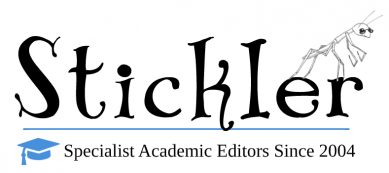Grammar rules are drilled into our heads from a very young age. As we grow older, we learn how to memorize these rules and incorporate them into our academic and everyday writing. As with most things in life, times change—and so have grammar rules as we know them. With the advent of social media and digital writing, traditional grammar rules have started to be bent, broken, and rewritten. Some grammar rules are just antiquated and others inhibit writers from making creative and beautiful work. Below is a list of four grammar rules that, no matter what your school teacher told you, you should forget. Unlearning these rules will open up a world of freedom and exploration in your future writing projects.
Ending Your Sentences With a Preposition
This antiquated rule stemmed from writers in the 19th century who were obsessed with the way the Latin language structures its sentences. While it’s true that that the English language can find its roots in Latin, they are not one and the same. People who work hard to follow this rule often end up switching their sentences around so they sound unnatural and awkward. See the example below:
Ending with a preposition—“Where did it come from?”
Ending without a preposition (following the rule)—“From where did it come?”
You can see how differently the two sentences sound from one another just by switching the placement of the preposition. As English has modernized, the latter sentence sounds unnatural and out of the ordinary. So feel free to forget this 19th-century grammar rule in exchange for writing that sounds like it’s from the 21st century.
Adverbs Ending with “-ly”
Many grammar students have been taught that an adverb is only an adverb if it ends in “-ly.” This is just not true. There are a number of adverbs that do not have this ending and are just as grammatically correct when used in a sentence. These adverbs that do not end with “-ly” are often referred to as flat adverbs. Some examples of these are “safe,” “fast,” “soon,” and “bright.” Below is an example of a pair of sentences that are both grammatically correct even though one has an adverb with an “-ly” and one doesn’t.
Adverb with an “-ly”—“Drive safely!”
Adverb without an “-ly”—“Drive safe!”
Starting a Sentence with “And” or “But”
Beginning a sentence with a conjunction was once considered a big “no-no” in the grammar rule world. But we’re here to tell you that it’s perfectly okay to start a sentence with “and” or “but.” Children are often taught this rule by grammar teachers so that they don’t fall into the trap of starting every sentence with “and.” As long as you aren’t overdoing it, starting a sentence with a conjunction can add much needed emphasis and clarity to your writing. See the examples below:
Starting without a conjunction—“Mary killed the man who had been chasing her. Additionally, she killed his accomplice.”
Starting with a conjunction—“Mary killed the man who had been chasing her. And she killed his accomplice too.”
Splitting Infinitives
It is a common grammar rule that a writer should never split an infinitive in a sentence. In other words, you shouldn’t place a word in between “to” and its subsequent verb. Splitting an infinitive doesn’t work all the time, but it shouldn’t be a hard and fast rule to avoid it because sometimes splitting an infinitive just feels right. Splitting infinitives can change the mood or tone of a sentence and add emphasis on particular words. Here’s an example a split infinitive that made the sentence better—“To boldly go where no man has gone before.”
The rules of grammar are important for giving structure and stability to writers, especially those who are just learning the English language. But as you become a master of the writing craft, you should rethink how steadfastly you stick to those rules. Breaking some grammar rules can give your writing emphasis, clarity, and a unique voice.














